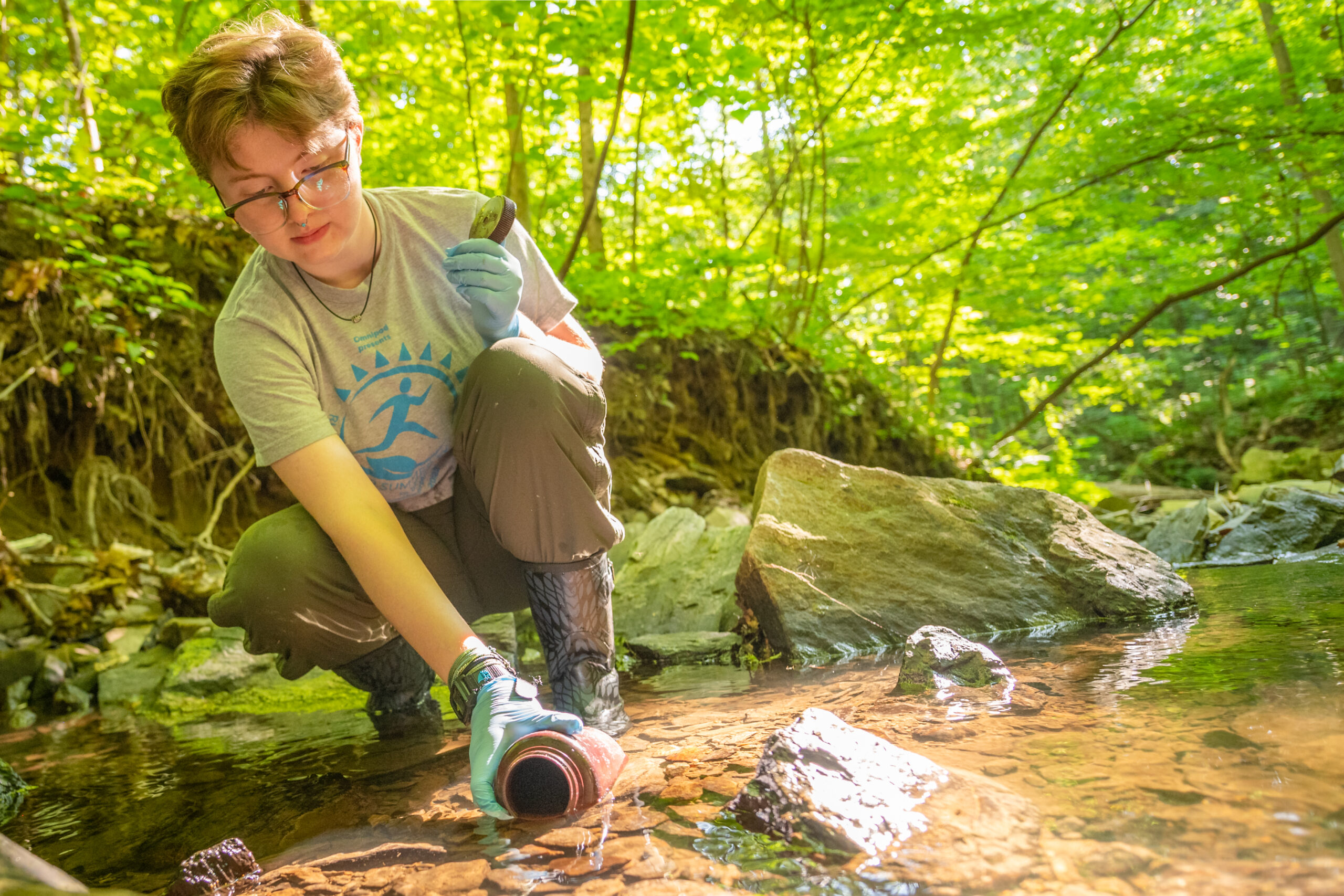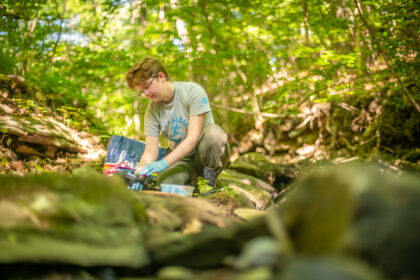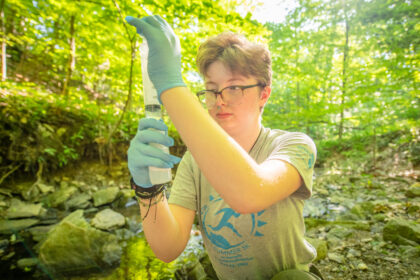Uncovering the secrets of water, from Siberia to Massachusetts

When Abby Beilman ’23 took geography professor Karen Frey’s Arctic and the Anthropocene course as a sophomore, they discovered parallels between Frey’s research and their interests. Now, Beilman is spending the summer and fall sampling water from tributaries of the Blackstone River, mirroring a method Frey used in Siberia.
Frey’s research, published in the scientific journal Biogeosciences in 2016, analyzed the Kolyma River in northeast Siberia. Peat and loess, a loosely compacted sediment, are important sources of dissolved organic matter (DOM) to inland waters in Siberia and play a role in the remineralization of organic carbon. Frey measured chromophoric/colored dissolved organic matter (CDOM), a mixture of different carbon-based molecules leached from decaying organic materials, such as tree and plant leaves, other plant parts, and soils. She determined that the ability to monitor shifts in the quantity and quality of dissolved organic matter was critical for understanding the Arctic carbon cycle.
With Frey’s guidance, Beilman is now collecting water samples and analyzing CDOM throughout the Blackstone River Watershed.
“Karen is wonderful to work with,” Beilman says. “She is really supportive of her students, and I am always learning new things from her, both in class and in the field or lab.”

A self-described history and policy nerd, Beilman is looking for possible correlations between their research and the Blackstone’s industrial heritage. They want to determine how past pollution impacted the growth of plants in the Blackstone River Watershed; if the impact of pollution on the waterbody is observed in CDOM measurements; and if visual evidence of CDOM, like water color, aligns with visual evidence of pollution, like litter.
“We are considering the level of urbanization as part of our research — with sites existing on a scale from solidly urbanized to solidly rural This could certainly play into things when considering which areas have experienced the most industrial impact,” Beilman says.
Ultimately, Beilman wants to provide a more comprehensive picture of the Blackstone River Watershed that extends beyond the current data, which largely track water-quality metrics.
Beilman collects water samples one day per week, visiting eight sites over the course of about seven hours. This is Beilman’s honors thesis, so the work will continue into the fall.
Beilman arrived at Coal Mine Brook in Worcester on a recent July morning and made the short hike down to the water. They recorded the air temperature (21 degrees Celsius), and the quality of the water — on this day, the water wasn’t cloudy or foamy. Beilman put on gloves before wading into the stream to collect a sample. They also recorded the water temperature, pH, conductivity, and atmospheric pressure before packing up and heading to the next site.
“The samples will show how the concentration of visible organic matter is changing,” Beilman says. “That can have implications for carbon cycling, climate change, and how water relates to the carbon cycle.”
Until Beilman can analyze all the samples, it’s hard to determine any correlation between CDOM and pollution.
“It’s possible that the interaction is minimal,” Beilman says. “However, measuring CDOM will at minimum allow us to add another suite of measurements to those already taken in the Blackstone River Watershed, providing a more complete picture of the watershed and its health.”
The work could aid organizations devoted to studying and improving the watershed, like the Blackstone Watershed Collaborative, run through Clark’s George Perkins Marsh Institute.
Beilman majors in environmental science on the earth system science track and plans to earn an M.S. in environmental science and policy through Clark’s accelerated degree program. They hope to continue pursuing the Blackstone project at the master’s level.

“Right now, I’m studying the summer-to-fall transition, but the winter-to-spring transition is supposedly even more interesting,” Beilman says. That’s because dead leaves will fall into the water and create what Beilman refers to as “leaf tea,” which refers to the water’s deep brown color.
Beilman wants to expand their research and thinks the Merrimack River Watershed in Greater Lowell could provide an interesting point of comparison as a future project. The area also has an industrial past.
“I’ve lived in Massachusetts for my entire life, and all of my work and research has been here,” Beilman says. “Whether it’s with this research in particular, or something a little different, I’d love to explore other places throughout the state and beyond.”


